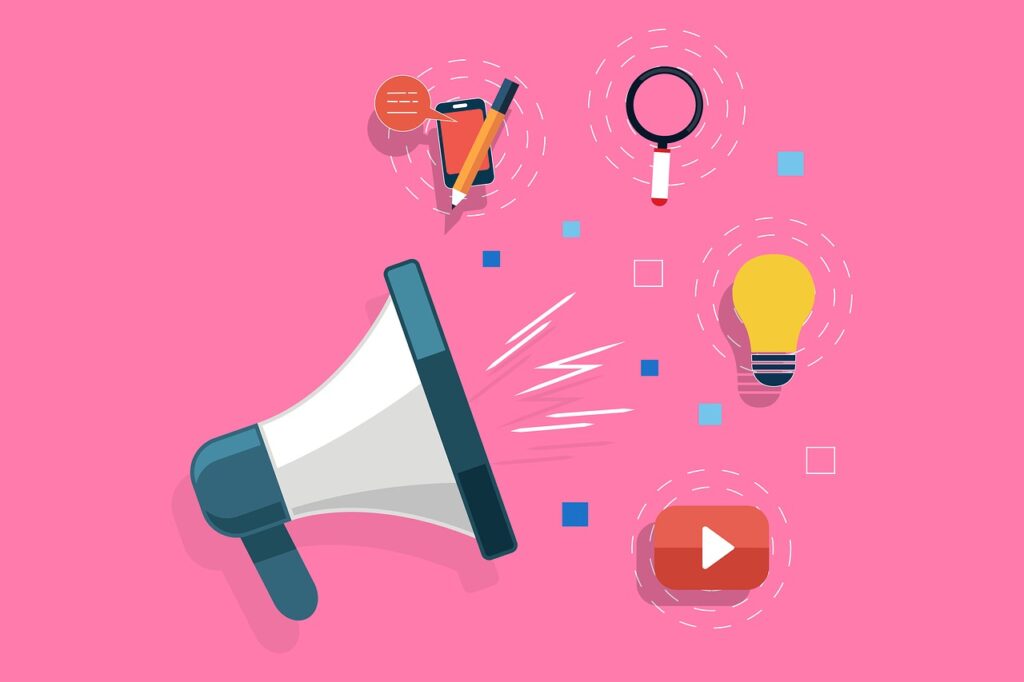Published on 18th April 2025
Authored By: Faisal Rizwi
The ICFAI University, Dehradun
Introduction
AI and ML are no longer considered future dreams. They have quickly spread to all parts of modern life. We see them in self-driving cars and medical checks. They are also used in the money trading and justice systems. This change in technology is powered by complex rules and large amounts of data. This promises new levels of efficiency, progress, and a better society.
However, the ability of AI/ML to change also creates problems. This brings difficult legal issues that current systems are not ready to deal with. As rules make more choices with serious results, the law must change. It should ensure responsibility, justice, and basic rights during this time of rule. This article examines important legal problems associated with AI/ML. It checks topics such as who is responsible, data safety, ownership of ideas, unfairness, rules, and what it means to be a legal person in this time of machines that can work more on their own.
Liability Paradox: Who is Responsible when Algorithm Errs?
A major legal problem with AI/ML is determining who is responsible for causing damage to these systems. Normal products have clear rules regarding their responsibilities. But AI/ML, especially deep learning, works like a “black box.” This hides how things happen and makes it difficult to identify the source of the mistakes. This hidden nature makes it unclear who is responsible for the harm caused by the AI.
AI responsibility is difficult to understand in cases, such as self-driving car crashes. Finding who is at fault can involve many groups. This includes car makers, AI creators, users, and data companies. Incorrect or incomplete data may have caused this problem. AI development often spreads through complex chains. This makes it even more difficult to determine who is responsible. It moves beyond simple ideas of product responsibility.
Current legal ideas, such as carelessness and strict product responsibility, are not sufficient for these new issues. It is difficult to prove the carelessness of complex AI rules. It is also not easy to say what is a “problem” in an AI system that keeps learning. “Rule responsibility,” which aims for openness and being responsible, could be a way to move ahead. However, it is technically difficult to study AI choices. We also need to maintain some AI rules that the companies own. These factors pose a major challenge. In addition, AI is becoming increasingly independent. This brings up basic questions regarding control and purpose. These ideas are not easily applied to nonhuman things in today’s laws. Creating new legal systems for AI/ML is important. This will protect people and push for good progress in this fast-changing area.
Data Privacy in the Age of Algorithmic Surveillance: Reconciling Innovation with Fundamental Rights
AI/ML systems require large amounts of data. They learn and get better by studying large amounts of data. These data often include the private details of people. This need for data makes it difficult to follow the current data privacy laws. Laws such as the GDPR and CCPA are designed to protect personal privacy.
These rules focus on ideas such as using less data, using data only for certain reasons, and obtaining permission to use the data. However, AI/ML can find new facts and see patterns in the data that seem normal. This goes against these rules. Even when AI is trained with data that hide people’s names, it can still identify who people are. It can also provide private information. This demonstrates the problem of how AI works and keeps data private.
GDPR has rules like the “right to explanation” and the “right to say no to automatic choices.” This becomes extremely difficult with AI/ML. People have the right to know why automatic choices are made regarding them. But some AI models are like a “black box.” This makes it difficult to provide a clear explanation. Additionally, the right to say no can be weakened by AI choices that are difficult to understand. Alternatively, people may not even be aware that AI is being used.
In addition, using AI to watch and study people raises concerns about mass watching and unfair treatment. Tools such as face recognition, systems that guess crime, and AI social credit systems demonstrate how AI can hurt privacy rights and freedoms. When AI collects and uses a large amount of personal data, it can limit free speech, stop people from joining together, and unfairly affect weaker groups in society.
Legal rules must be changed to address these privacy problems. This means making data use rules stronger, being more open about AI rules, creating good ways to check AI rules, and ensuring that data privacy rules are actually used with AI. It is important to carefully balance protecting basic privacy rights while attempting to help AI/ML progress. This requires a careful and smart method to make rules.
Intellectual Property and Algorithmic Creativity: Who Owns the AI Output?
AI/ML makes it difficult to use old rules on idea ownership, especially copyright. AI systems are becoming good at creating creative things. This brings up a key question: Who owns the copyright for things that AI makes? Current copyright law is based on human creators and “works of the mind.” It struggles with things made by AI on its own. It is not clear if these creations can even obtain copyright and who should own it.
People are thinking about different ways to solve the copyright problem for AI creation. One idea is not to provide any copyright. This would mean that AI works are free for anyone to use because no human has made them. However, this could stop people from investing in AI creativity because there would be no monetary benefit. Other ideas include giving copyright to the AI maker as the person who created the tool. Alternatively, it could go to the user, who tells the AI what to do. A newer idea is to make totally new “special type” idea ownership rights just for AI works. This would recognize that they are unique. However, this would require significant changes in laws and work together worldwide.
Similar problems occur with patent laws. AI systems are increasingly helping invent and discover new things. The question is whether an AI system can be seen as an “inventor.” This goes against the usual idea in patent law that inventors are humans. AI is a helpful tool in inventing, but it is debatable whether it can be the only inventor or joint inventor. Saying AI inventions cannot be patented, which might prevent people from using AI in important research areas. Ultimately, the legal rules for idea ownership must change for the new world of AI creativity and invention. This process should be performed in a balanced manner. It needs to encourage new ideas but also respect old idea ownership rules and the public good. This might lead to new definitions of who are creators and inventors. Alternatively, new types of idea ownership protection might be required in the AI age.
Bias and Discrimination: Algorithmic Injustice in a Data-Driven World
The AI/ML systems were trained using real-world data. They often take in and worsen the unfair biases that already exist in the society. This leads to unfair choices made by computers that discriminate between groups. These groups are protected by law because of factors such as race, gender, religion, or who they love. This means that people in these groups can be treated unfairly based on these things. This unfairness has been demonstrated in many ways. For example, face ID systems are not as effective at seeing faces with darker skin. Loan computers may unfairly refuse loans from minorities. Job tools may be preferred by male workers. Crime prediction tools may unfairly target minority areas. These examples show that computer bias is not just a small error. This reflects a greater unfairness in society that gets into AI systems.
The current anti-unfairness laws for AI systems are tricky. It is difficult to prove whether someone is meant to discriminate. This is often required for legal cases. This becomes complex when computers, even without being made unfair, produce biased results. This occurs because of bad training data or the work of computer rules. Some AI models are like a “black box.” This hides how choices are made, and makes it harder to find and fix the reasons for bias. This gap between old legal rules and the details of AI means that we need new ways to effectively deal with computer bias.
Fixing computer bias requires many types of action from technology, ethics, and law. Important solutions include fixing the data bias by carefully choosing and balancing the data. We also need to make the computer rules open and easy to understand. This helps us see how the choices are made. Independent checks of computer rules should be used to determine the bias before and after they are used. Additionally, we must create new legal rules that focus on computer fairness. These new rules might need to change the legal focus from meaning to discriminate the results of discrimination. They should establish clear rules for computer responsibility. Making sure that AI is fair and does not discriminate is not just a legal must because of anti-unfairness laws. It is a basic moral duty to stop worsening society’s unfairness and to build trust in AI technology.
The Regulatory Frontier: Governing AI in a Rapidly Evolving Landscape
Setting rules for AI/ML is a difficult task. This is because they change quickly and are used in many different areas. Current rules for specific areas are often insufficient for AI’s wide effects of AI. This creates a gap in rules. A key discussion is to find the correct balance. We need to not only help new ideas grow, but also lower the possible dangers. This shows the natural problem of balancing these two goals when controlling AI.
Around the world, different ways of making rules have been considered and used. Area-specific rules refer to changing the rules we have now in areas such as health or money to fit AI problems. Risk-based rules, such as the EU’s AI Act, focus on sorting AI uses according to how risky they are. They put stronger rules on high-risk systems and stricter rules on lower-risk systems. Broad laws suggest making general rules that are not tied to one area. These rules are applicable only to AI. This offers a complete, but complicated, way to control AI.
Regardless of the chosen method, a good AI control depends on certain key factorss. Being open and easy to understand was the most important factor. This means there is a need for AI systems that people can understand and push for technology that explains AI. Rules about who is responsible are needed to set clear lines for AI actions and results. Adding ethical thought ensures that AI progress matches human values and rights. Finally, working together across countries is important. This helps make AI rules similar worldwide, fix problems that cross borders, and create a fair situation for everyone. Moving through this rulemaking area requires a balanced, flexible, and value-based plan. This plan should help good and ethical AI progress for good society.
The Evolving Definition of Legal Personhood: AI as Subjects or Objects of Law?
In the future, AI systems are becoming smarter and more independent. This makes us ask basic questions about giving AI legal status as a person. Currently, laws see AI as a tool, not as things with legal rights. Legal person status is only applicable to people and some groups, such as companies. However, as AI improves and can learn, change, and maybe even become aware, the idea of giving AI some kind of legal person status becomes more important and needs serious thought.
If we give an AI legal person status, it could have significant effects in many areas. First, it could mean giving AI some rights such as owning things or making contracts. This also means that they could be responsible for what they do. Second, legal status can create a system for AI to be directly liable. This would move away from blaming the people who made or used AI for AI’s actions. Finally, this idea brings up hard ethical questions about AI’s moral place and how it relates to humans. Therefore, we need to think carefully about ethics carefully.
Even though AI, which is fully independent and deserves person status, is still just an idea and far in the future, it is important to explore these deep thinking, ethical, and legal questions. The legal system for AI needs to look ahead and be flexible. It must be ready to handle today’s AI problems, and also the possible long-term results of AI becoming much smarter and more independent. Thinking about these issues early is key to making sure we have strong and future-ready laws for the age of advanced AI.
Conclusion
Moving through the complex legal world of AI/ML means changing current rules. It also needs different fields to work together to fix many-sided problems. Important things to focus on include setting up computer responsibility and liability. We need to make data privacy stronger and change idea ownership law. It is key to lower bias and create good rule systems. We must also talk about ethics, including how we see legal person status changing. If we act early to deal with these issues by careful planning and ethical progress, we can use the powerful changes AI brings. At the same time, we can protect basic rights, push fairness, and make sure AI helps people.
References
- Regulation (EU) 2016/679 of the European Parliament and of the Council of 27 April 2016 on the protection of natural persons with regard to the processing of personal data and on the free movement of such data, and repealing Directive 95/46/EC (General Data Protection Regulation) [2016] OJ L119/1
- California Consumer Privacy Act of 2018, Cal Civ Code § 1798.100 et seq
- Regulation (EU) 2024/1689 of the European Parliament and of the Council of 13 March 2024 laying down harmonised rules on artificial intelligence (Artificial Intelligence Act) [2024] OJ L151/1
- “AI And Copyright Navigating Legal Challenges And Ownership” (IIPRD |, November 11, 2024) <https://www.iiprd.com/ai-and-copyright-navigating-legal-challenges-and-ownership-in-the-digital-era/>
- Bains C, “The Legal Doctrine That Will Be Key to Preventing AI Discrimination” Brookings (September 13, 2024) <https://www.brookings.edu/articles/the-legal-doctrine-that-will-be-key-to-preventing-ai-discrimination/>
- Belenguer L, “AI Bias: Exploring Discriminatory Algorithmic Decision-Making Models and the Application of Possible Machine-Centric Solutions Adapted from the Pharmaceutical Industry” (2022) 2 AI and Ethics 771
- “CENTER FOR HUMAN SECURITY STUDIES” (CENTER FOR HUMAN SECURITY STUDIES, October 19, 2021) <https://chss.org.in/artificial-intelligence-a-debate-for-granting-legal-personhood/>
- Davidson S, “The Growth of AI Law: Exploring Legal Challenges in Artificial Intelligence” National Law Review (January 28, 2025) <https://natlawreview.com/article/growth-ai-law-exploring-legal-challenges-artificial-intelligence>
- Filipsson F, “The Legal Frontier, AI in Legal, Regulation and Governance” (Redress Compliance – Just another WordPress site, February 10, 2024) <https://redresscompliance.com/the-legal-frontier-ai-ethics-and-regulation>
- Insights D, “The Growing Data Privacy Concerns with AI: What You Need to Know” (September 4, 2024) <https://www.dataguard.com/blog/growing-data-privacy-concerns-ai/> accessed February 20, 2025
- “Legal Challenges Before Artificial Intelligence” (Drishti Judiciary) <https://www.drishtijudiciary.com/editorial/legal-challenges-before-artificial-intelligence>
- “The Interaction between Intellectual Property Laws and AI: Opportunities and Challenges” (Norton Rose Fulbright) <https://www.nortonrosefulbright.com/en/knowledge/publications/c6d47e6f/the-interaction-between-intellectual-property-laws-and-ai-opportunities-and-challenges>


